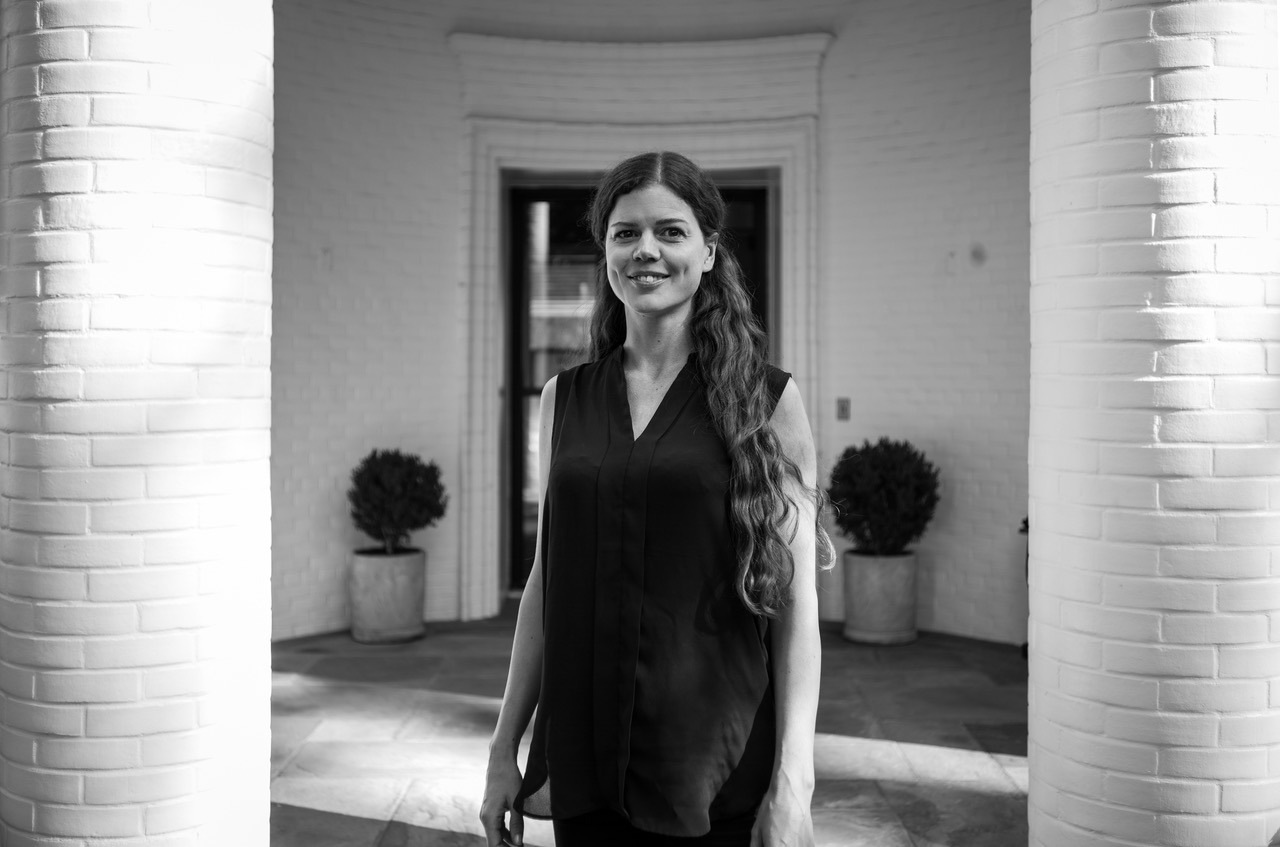Sensing the Ancient World: The Invisible Dimensions of Graeco-Roman Art
 My research project, entitled Sensing the Ancient World: The Invisible Dimensions of Graeco-Roman Art, involves the human senses–visual, olfactory, tactile, gustatory, and auditory. They are most often perceived as something we as archaeologists cannot study–a kind of invisible past and therefore often ignored in scholarship. So far, archaeology has mainly engaged and studied direct material evidence in the form of objects such as pottery, tools, weapons, figurines, sculpture, etc. These items, however, obviously do not represent the entire picture, as an abundance has disappeared (e.g. artifacts made from organic material such as wood or textiles), while other aspects are in intangible form. This particular focus on the preserved is reflected in our general approach to the ancient white aesthetic marble works that are on display in museum collections. These art works, no matter how beautiful, are in a way only a “skeleton”; they represent solely the first layer and are thus far from representative of the ancient experience of same works. Thus, our perception of ancient sculpture is in a sense very clinical. This view, however, is slowly being replaced by a new and more inclusive view. For example, Paolo Liverani argues that color represented a fourth dimension of ancient sculpture. But what we tend to forget is that ancient art had additional dimensions that are invisible to the contemporary viewer. My research project will focus on these additional dimensions–the invisible archaeology–through the involvement of the human senses, in order to gain an innovative and more holistic approach to the study of Graeco-Roman art–a topic where our evidence, both material and literary, is fragmentary and scattered. Specifically, the study will focus on the significance of sculptural polychromy, textiles, light, scent, and sound for our understanding of ancient sculpture.
My research project, entitled Sensing the Ancient World: The Invisible Dimensions of Graeco-Roman Art, involves the human senses–visual, olfactory, tactile, gustatory, and auditory. They are most often perceived as something we as archaeologists cannot study–a kind of invisible past and therefore often ignored in scholarship. So far, archaeology has mainly engaged and studied direct material evidence in the form of objects such as pottery, tools, weapons, figurines, sculpture, etc. These items, however, obviously do not represent the entire picture, as an abundance has disappeared (e.g. artifacts made from organic material such as wood or textiles), while other aspects are in intangible form. This particular focus on the preserved is reflected in our general approach to the ancient white aesthetic marble works that are on display in museum collections. These art works, no matter how beautiful, are in a way only a “skeleton”; they represent solely the first layer and are thus far from representative of the ancient experience of same works. Thus, our perception of ancient sculpture is in a sense very clinical. This view, however, is slowly being replaced by a new and more inclusive view. For example, Paolo Liverani argues that color represented a fourth dimension of ancient sculpture. But what we tend to forget is that ancient art had additional dimensions that are invisible to the contemporary viewer. My research project will focus on these additional dimensions–the invisible archaeology–through the involvement of the human senses, in order to gain an innovative and more holistic approach to the study of Graeco-Roman art–a topic where our evidence, both material and literary, is fragmentary and scattered. Specifically, the study will focus on the significance of sculptural polychromy, textiles, light, scent, and sound for our understanding of ancient sculpture.
To briefly elaborate: The white marble artifacts we see in museums were originally painted in various colors, although only few traces have survived the ravages of time. Besides being painted in colors, ancient sculpture–as well as architecture–was occasionally embellished with or even dressed in textiles, which would potentially transform their appearance drastically. An additional dimension of ancient art is fragrance, since perfumes and scented oils were used not only for beautification of the human body, but also for statues, which were also adorned with sweet-smelling wreaths and garlands. Thus, neither the marble nor the polychromy is sufficient to understand the original appearance and expression of ancient art.
The topic caught my interest already during my PhD research, which dealt with the use of textiles in ancient Greek sanctuaries, e.g. for dressing cult statues in the temples. Subsequently, my postdoc in ancient polychromy at the Ny Carlsberg Glyptotek made me think about our often very clinical perception of the white Roman marble statues, which is even further enhanced by their placement in modern day “white cubes”–surrounded by silence, the absence of smells, lit by artificial lighting and especially–‘NO TOUCHING!’ This is very different from their original setting, in which they were surrounded by an array of different smells and sounds, and originally painted in bright colors and adorned with textiles and garlands and lit by only torches and oil lamps–or sunlight if placed outside.
Much of the archaeological material has disappeared today, which obviously makes such a study somewhat challenging. However, fortunately, a wealth of information is hidden in the written sources–epigraphical as well as literary sources. The fellowship at the CHS in Washington is therefore a fantastic opportunity, since the Center has an excellent library and not least distinguished and admirable specialists in the field of classics, which makes it the optimal place to carry out this kind of research.
Cecilie Brøns
Cecilie Brøns is a postdoctoral fellow at the Ny Carlsberg Glyptotek in Copenhagen, where she directs a collaborative interdisciplinary research project on the polychromy of ancient art and architecture, financed by the Carlsberg Foundation. She received her PhD in Classical Archaeology in 2015 from the University of Copenhagen. She conducted her PhD research at The National Museum of Denmark, Department of Ancient Cultures of Denmark and the Mediterranean and in the Danish National Research Foundation’s Centre for Textile Research (CTR) at the University of Copenhagen. Her post-doctoral research concentrates on ancient textiles and polychromy, particularly in relation to ancient sculpture. Her monograph, entitled Gods and Garments: Textiles in Greek Sanctuaries in the 7th to the 1st Century BC, was recently published (Oxbow 2016). Together with professor Marie-Louise Nosch, she is the editor of the anthology Textiles and Cult in the Ancient Mediterranean (2017). During her fellowship at the CHS, she will explore the importance and effect of the senses for our perception and understanding of ancient sculpture.
Applications for the CHS fellowship program 2018-19 are open until October 29, so learn more here. For a full list of the fall 2017 fellows visit the dedicated webpage.

